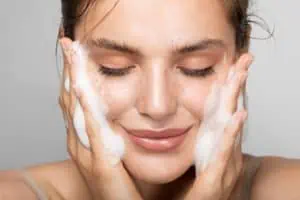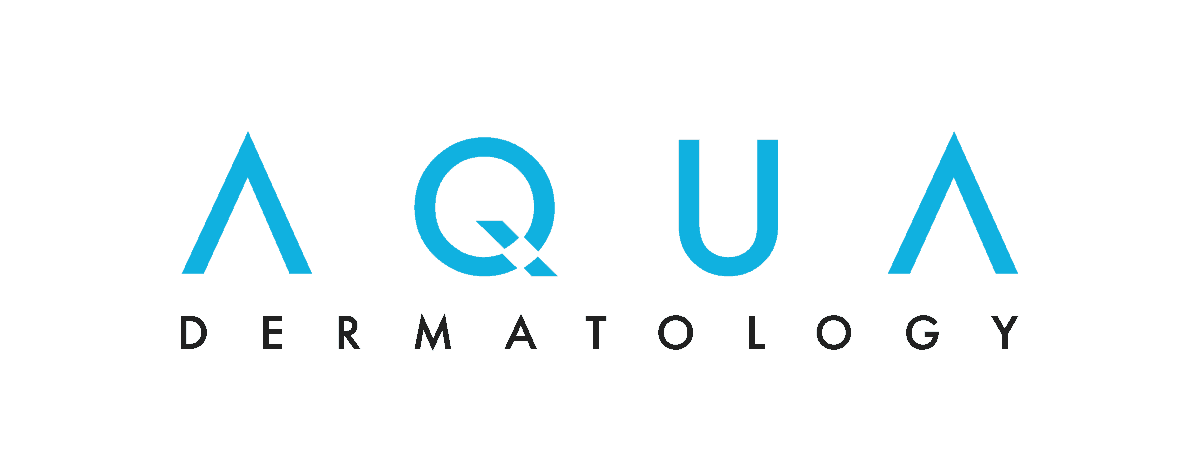
When you wake up in the morning, what do you do? Make coffee, brush your teeth, get dressed? Shave or put on makeup? If that’s all, you’re missing a few things.
No matter your gender or skin type, it’s important to wash your face in the morning, smooth on some moisturizer and apply sunscreen — the three critical steps in any morning skin care routine, according to Julie Forero, DO, a board-certified dermatologist with Water’s Edge Dermatology. She explains why and provides tips for each step, including her top skin care products.
Step 1: Wash your face
If you don’t normally wash your face in the morning, it’s time to start. Washing removes oil that accumulates overnight, but that’s not all. “Our skin is constantly replacing itself, so we develop dead skin cells on surface. Sometimes they need a little assistance to come off,” said Dr. Forero. “Washing with an exfoliating cleanser reveals a more radiant complexion and promotes a clean palette for applying makeup,” she added.
Tips for washing your face
- Choose an exfoliating cleanser. A cleanser with salicylic acid and/or glycolic acid will chemically exfoliate dead skin cells. Try wederm Exfoliating Cleaner, which comes in two versions: one with 2 percent salicylic acid and 2 percent glycolic acid, and one with 2 percent salicylic acid and 5 percent glycolic acid (which is better for oily skin). Other good options are Oil-Free Acne Wash from Neutrogena, which contains 2 percent salicylic acid (and no, it’s not just for acne), and Effaclar Medicated Acne Face Wash from La Roche-Posay, which contains 2 percent salicylic acid as well as gentle-on-the-skin lipohydroxy acid.
- Skip the salicylic acid. If you have very sensitive skin, rosacea or atopic dermatitis, or if you’re pregnant, you should use a glycolic acid product instead of one with salicylic acid. One to try is Glytone Mild Gel Cleanser. If it bothers your skin, try a non-exfoliating cleanser such as ZO Gentle Cleanser or CeraVe Hydrating Facial Cleanser.
- Gently massage in the cleanser, making small circles with your finger pads. “Massaging promotes circulation and helps very gently exfoliate your skin cells,” said Dr. Forero. It also promotes lymphatic drainage, which may make your face look less puffy.
- Rinse well and gently pat dry. “You want your face to still have a little bit of water on it when you apply moisturizer,” said Dr. Forero. Damp skin absorbs product more readily and gives the moisturizer the chance to lock in the hydration.
Step 2: Apply moisturizer

“Moisture is different from sebum, which is the oil in the skin,” said Dr. Forero. “Moisturizer helps prevent trans-epidermal water loss, and this helps keep the skin barrier intact. The more whole your skin is, the less easily it will become irritated by the environment.”
You don’t have to spend a fortune on a moisturizer. In fact, price doesn’t always correlate with quality. “Some wonderful products are very cheap,” noted Dr. Forero.
Moisturizer tips
- Look for hyaluronic acid. Despite the “acid” in its name, it’s very good for sensitive skin. “It’s a molecule that has long arms like an octopus. Those arms attract and hold a lot of water, so they plump up like a big sponge,” said Forero. The result: glowing, dewy skin. Dr. Forero likes Neutrogena’s Hydro Boost line — the gel for oily skin and the gel-cream for drier skin. Another product she likes, which contains more hyaluronic acid, is wederm Pure Hydration hyaluronic acid serum. Use it as a moisturizer, use it before your moisturizer or add a drop or two into your moisturizer.
- If your skin is dry or sensitive, opt for a cream instead of a lotion. Creams are more moisturizing. They’re also potentially less irritating because they contain less water, which means less preservative is necessary. (Some lotions are an exception to the rule; Dr. Forero notes that some CeraVe lotions are as rich as a cream.)
- If you live in a hot climate like Florida, you may want a lotion instead of a cream. VaniCream Moisturizing Lotion is a good, light option.
- See a dermatologist if you can’t find a moisturizer your skin can tolerate. He or she can guide you through a more educated trial-and-error selection process.
Step 3: Apply sunscreen
“Rain or shine, whether you’re going outside or not, everybody needs sunscreen every morning,” said Dr. Forero. “Keep it by your toothpaste and get in the habit of putting it on your face. If you’re doing that once in the morning, that’s great. If you can reapply before lunch and before leaving the office in the afternoon, that’s phenomenal.”
Even if you’re under the sun only while walking from your car to a building, that exposure adds up. “UVAs rays break down the elastin and collagen in the skin, and that makes you look aged over time,” said Dr. Forero. “It’s a very slow, gradual process. So, sunscreen is your best anti-aging product.”
Remember that UVA rays can penetrate windows. These rays can cause wrinkles and also common forms of skin cancer, including basal cell carcinoma and squamous cell carcinoma. That’s why sunscreen is important even indoors.
Sunscreen tips
- Use a broad-spectrum sunscreen to protect against both UVB rays (responsible for sunburns) and UVA rays. Choose an SPF of 30 or more.
- Look for zinc oxide. “My favorite broad-spectrum ingredient is zinc oxide, and I like to see at least 7 percent. Zinc oxide covers more of the UVA wavelengths and lasts longer than avobenzone,” said Dr. Forero. (Avobenzone is a UVA-absorbing ingredient in chemical sunscreens). “I use EltaMD UV Clear.” It has 9 percent zinc oxide and an SPF of 46. “I like the product container because one pump gives you enough product to cover your face, neck and upper chest.” Don’t worry, it goes on clear.
- Don’t like the feel of sunscreen? If your skin can tolerate fragrance, try Eryfotona Actinica from Isdin. “It has a special technology so it doesn’t feel like you’re wearing a cream as much,” said Dr. Forero.
- Hit commonly missed spots. A lot of people forget their ears, neck, eyebrows, hairline and eyelids — all places skin cancer can develop.
A basic morning skin care routine takes only a couple of minutes, less time than you spend drinking your coffee. The payoff is clearer, more radiant skin, protection from sun-related skin aging and a lower risk of skin cancer.
Article Written By: Marianne Wait, an award-winning health and wellness writer based in New Jersey.
Medical Review By: Julie Forero, DO





